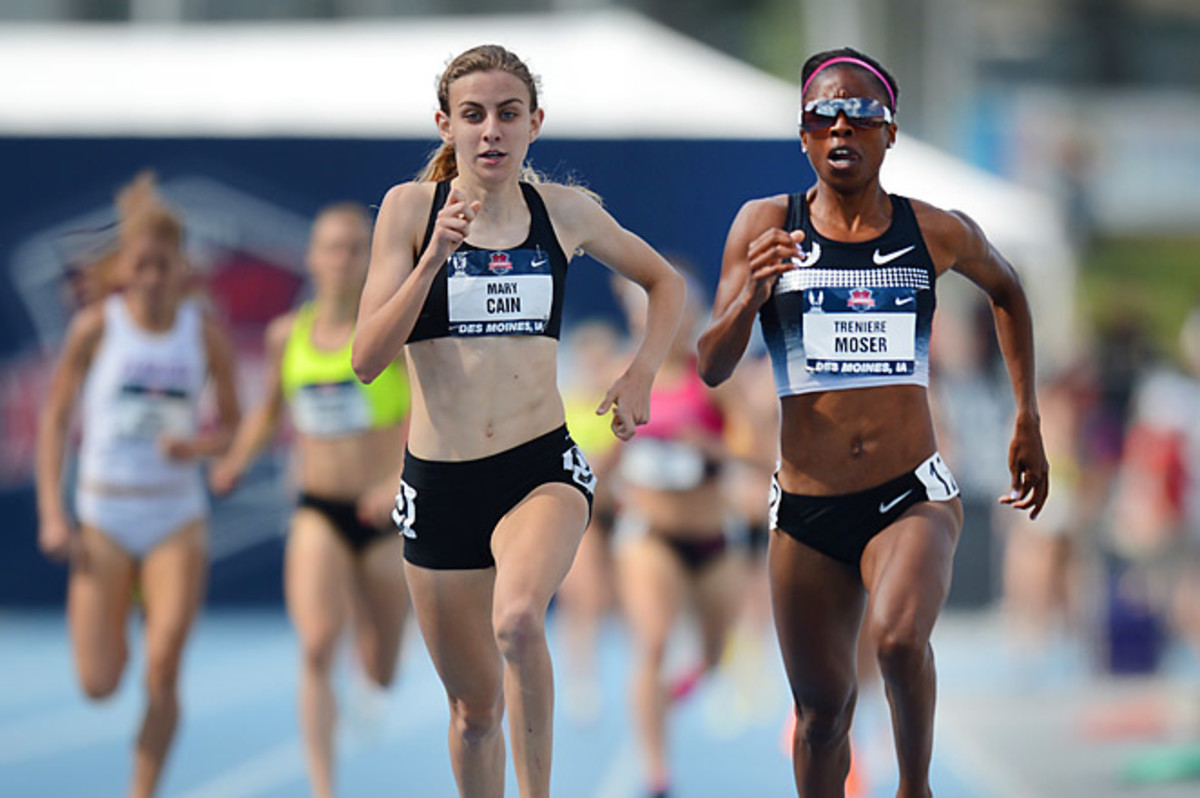Mary Cain shows a talent far beyond her years at nationals


At the conclusion of her high-school academic year in Bronxville, a suburb just north of New York City (where Cain is an excellent student), Cain went to Park City to train at altitude with other members of the Salazar-trained Nike Oregon Project. Cain's family pays her expenses to retain NCAA eligibility. She will go to college, but the family has not yet decided if she will run college track. The group includes not only Farah and Rupp, but also, as of this year, Moser, who is rebuilding her career after winning three consecutive U.S. titles from 2005-07. Cain (whose career is increasingly, and dangerously compared to Mary Decker Slaney, a teenage star who went on to win two titles at the first world championships in 1983) was expected to contend strongly for a worlds position.
She qualified for the final easily in her Thursday afternoon heat and was a typically ebullient 17-year-old afterward. But on Friday morning, she called her mother, also named Mary, at home in New York, overwhelmed by nerves. "I was crying, I was like, 'I'm just a little kid, I'm scared,'" Cain said. "She said 'Mary, if I could carry you away, I would, but you would be kicking yourself for the rest of your life.'"
She was equally upset on the morning of the race. "She called me [Saturday morning] and said 'I'm freaking out,'" Salazar said. "I told her come over to our [Salazar's and sports psychologist Darren Treasure's] room [at the Marriott Hotel in downtown Des Moines]. She slept for four or five hours, we watched a movie, Dark Shadows,until it got to some spicy parts and I said, 'Mary, turn away.' And I turned off the TV."
Cain said, "I let the nerves take over me for a minute, but I have an amazing sports psychologist that helped me through it." Salazar said the message was this: "She was so worried about not doing well. It was 'Mary, as long as you do your best, whether you get first or get last, we love you. Your character is not your running. Your character is you.'"
And, let it be said: Speed helps. Saturday was a miserably hot and breezy day in Des Moines. The temperature was 91 degrees and the heat index 98 degrees at the time of the 1,500 meters, ensuring that a race which is always tactical at the championship level would be excessively so, as runners refused to sacrifice their chances by setting a fast pace on the lead. It was grindingly thus; interval recovery pace for most in the field. They shuffled through 400 meters in 85 seconds, 5:40 mile pace, and then went the next 400 in 75 seconds, still slow. Cain ran near the back.
Salazar's coaching is rooted in building racers who can kick at the finish. Cain was fast before they met. Both knew where Saturday's race was headed. "I told [Cain and Moser], 'If they want to hand it up to you in the last 400 or 500 meters of the race, no one can sprint with [you].'"
"I'm a kicker," Cain said. "I was running a kicker's race."
Their plan had been for Cain to follow the 31-year-old Moser to the lead in the final lap, but Cain, growing up in real time, made her move approaching the gun and gapped the field on the backstretch with the wind at her back. It was a grown-up move from a racer who is a young girl only on her birth certificate, reminiscent of Farah's winning surge in the Olympic 10k. "I was supposed to follow Treniere," Cain said. "At 400 meters, I felt good. I just took it. I needed to intimidate. I needed to assert a presence. I was all out."
Cain opened up eight meters on the field and rolled into the homestretch. "I was feeling awesome," she said. "I thought people would be flying down that backstretch behind me. But obviously I didn't want that to happen." She was driven by the simplest of needs: "I just really wanted to get that [Team USA] uniform. I wanted my victory celebration." (Similarly, she recalled competing in the junior nationals in Eugene two years ago, which are coupled with the senior event, and seeing Allyson Felix taking a victory lap with flowers and a USA flag. "I want some of that," she recalled thinking.)
She tied up in the last 50 meters, and Moser caught her at the line. Because the early pace had been so slow in the heat, Moser's winning time of 4:28.62 was the slowest in U.S. national championship history. Under the circumstances, that statistic is meaningless, particularly to Cain. She ran her final lap in 57.5 seconds; just weeks ago, her personal best for a flat 400 was 55 seconds, though Salazar estimates she could run 53.5 now.
When she was given a medal and a flag, she shared them with her tiny yellow friend. "I brought my duck," she said, "In case I needed some comforting. So I had a little buddy to carry my flag with me." Hers was an achievement freighted with paradox, earned by one so young, yet in the manner of someone far more experienced. It needed no context and demanded no dreams. It was only for now and that was enough.
